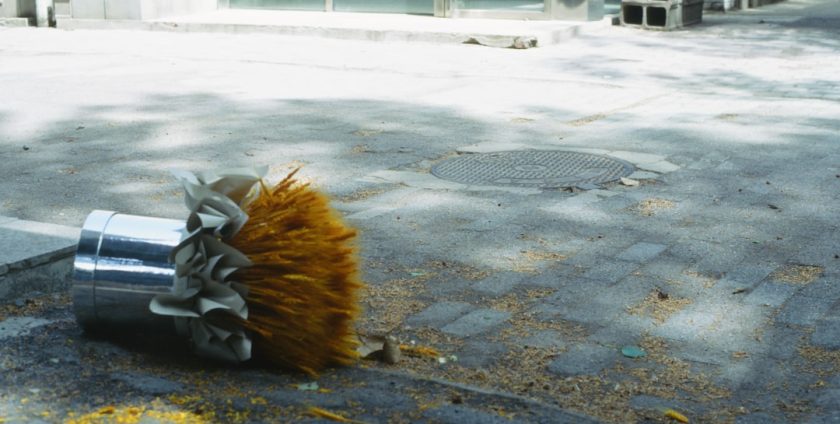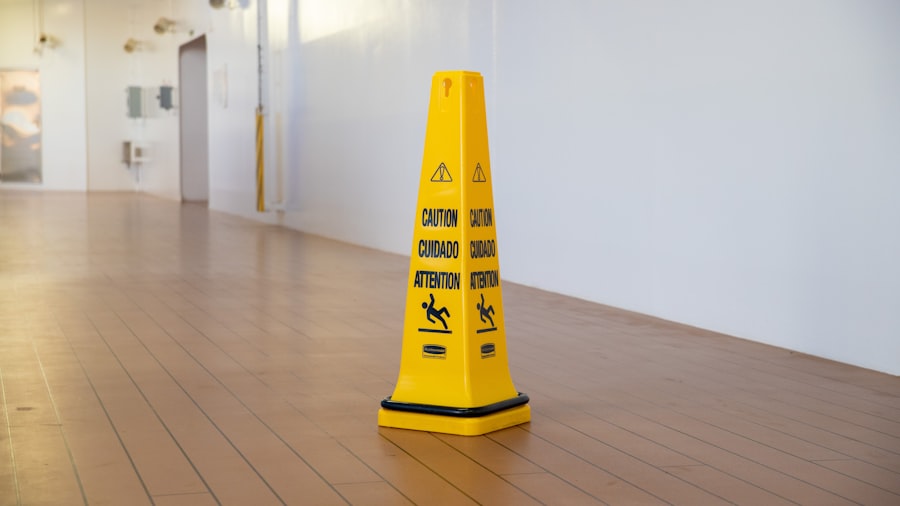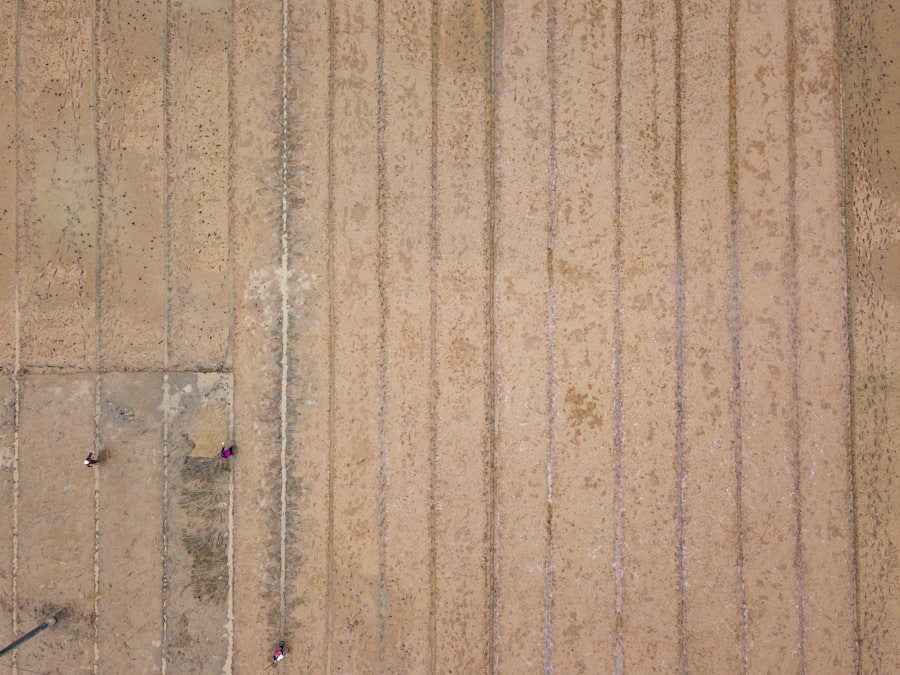
- By: admin
- Category: Commercial Floor Cleaning Machines
- 0 comment
In the bustling world of commercial cleaning, efficiency and effectiveness are paramount. Enter the walk-behind floor scrubber, a powerful ally for contract cleaners, building managers, and facility managers alike. These machines are designed to tackle large areas with ease, providing a level of cleanliness that traditional mopping simply cannot achieve.
With their ability to scrub, rinse, and dry floors in one pass, walk-behind floor scrubbers have become indispensable tools in maintaining the hygiene and appearance of various commercial spaces, from retail outlets to warehouses. The evolution of floor cleaning technology has led to the development of these sophisticated machines, which combine advanced engineering with user-friendly features. They are not only efficient but also environmentally friendly, often utilising less water and cleaning solution than conventional methods.
As we delve deeper into the world of walk-behind floor scrubbers, it’s essential to understand their operation, safety measures, and maintenance requirements to maximise their potential in your cleaning arsenal.
Summary
- Commercial walk behind floor scrubbers are essential for maintaining clean and safe floors in various commercial settings.
- Safety precautions, such as wearing appropriate personal protective equipment and being aware of surroundings, are crucial when operating a floor scrubber.
- Understanding the controls and features of a floor scrubber is important for efficient and effective cleaning.
- Properly preparing the floor and the machine for cleaning ensures optimal results and prolongs the life of the equipment.
- Techniques for maneuvering the floor scrubber, such as overlapping passes and using the correct speed, are key to achieving a thorough clean.
Safety Precautions for Operating a Floor Scrubber
Safety Precautions
First and foremost, personal protective equipment (PPE) should be worn at all times. This includes non-slip footwear to prevent accidents on wet surfaces, gloves to protect hands from cleaning chemicals, and eye protection if there’s a risk of splashes.
Preparing the Cleaning Area
Additionally, it’s crucial to ensure that the area being cleaned is free from obstacles and that any potential hazards are clearly marked to prevent accidents.
Machine Familiarity and Emergency Procedures
Another vital aspect of safety is understanding the machine itself. Before operating a floor scrubber, it’s essential to read the manufacturer’s manual thoroughly. Familiarising yourself with the machine’s features and limitations can prevent mishaps and ensure that you’re using it correctly. Furthermore, operators should be trained in emergency procedures, such as how to shut down the machine quickly in case of an emergency or how to handle spills of cleaning solutions safely.
Understanding the Controls and Features of a Floor Scrubber

A walk-behind floor scrubber is equipped with various controls and features designed to enhance its usability and effectiveness. Typically, these machines have a control panel that allows the operator to adjust settings such as water flow, scrubbing speed, and cleaning solution concentration. Understanding these controls is crucial for achieving optimal cleaning results while also conserving resources.
Moreover, many modern floor scrubbers come with additional features such as automatic shut-off systems when the machine is stationary for too long or sensors that detect the level of dirt on the floor. These innovations not only improve efficiency but also help in prolonging the life of the machine. Familiarising yourself with these features can significantly enhance your cleaning routine and ensure that you’re getting the most out of your equipment.
Preparing the Floor and Machine for Cleaning
Before embarking on a cleaning task with a floor scrubber, proper preparation is key to achieving the best results. Start by inspecting the area to be cleaned; remove any loose debris such as dust, dirt, or larger objects that could obstruct the scrubbing process. This initial step not only ensures a more thorough clean but also protects the scrubber from potential damage caused by foreign objects.
Once the area is clear, it’s time to prepare the machine itself. Check the water levels in the tank and ensure that the cleaning solution is appropriate for the type of flooring you’ll be working on. Additionally, inspect the brushes or pads for wear and tear; replacing them when necessary will ensure optimal performance.
Taking these preparatory steps can save time and effort during the actual cleaning process and lead to better overall results.
Techniques for Maneuvering the Floor Scrubber
Maneuvering a walk-behind floor scrubber requires a bit of practice but can be mastered with time. The key is to maintain a steady pace while allowing the machine to do its job effectively. Start by guiding the scrubber in straight lines across the floor, overlapping each pass slightly to ensure complete coverage.
This technique not only maximises cleaning efficiency but also helps in avoiding streaks or missed spots. Additionally, when navigating corners or tight spaces, it’s important to approach slowly and carefully. Many floor scrubbers are designed with a compact build that allows them to fit into smaller areas; however, sudden movements can lead to accidents or damage.
Practising smooth turns and gentle adjustments will help you become more adept at handling the machine while ensuring safety for both yourself and those around you.
Choosing the Right Cleaning Solution and Settings

Selecting the appropriate cleaning solution is crucial for achieving optimal results with your floor scrubber. Different types of flooring require specific cleaning agents; for instance, hardwood floors may need a milder solution compared to tile or concrete surfaces. Always refer to the manufacturer’s guidelines for both your floor type and the scrubber itself when choosing a cleaning solution.
In addition to selecting the right product, adjusting the settings on your floor scrubber is equally important. Factors such as water flow rate and scrubbing pressure can significantly impact cleaning effectiveness. For heavily soiled areas, increasing both water flow and pressure may be necessary; conversely, lighter settings may suffice for routine maintenance on less dirty floors.
Experimenting with different combinations will help you find what works best for your specific cleaning needs.
Best Practices for Cleaning Different Types of Floors
Each type of flooring presents unique challenges when it comes to cleaning, and understanding these nuances can greatly enhance your efficiency as an operator. For instance, when dealing with porous surfaces like concrete or tile, it’s essential to use a suitable scrubbing pad that can penetrate into crevices without damaging the surface. Additionally, using a neutral pH cleaner can help maintain the integrity of these materials while effectively removing dirt.
Using softer pads and milder cleaning solutions will prevent scratches or damage while still providing a thorough clean. It’s also advisable to avoid excessive water on these surfaces as it can lead to warping or discolouration over time.
By tailoring your approach based on flooring type, you can ensure that each surface is treated appropriately while achieving optimal cleanliness.
Maintaining and Cleaning the Floor Scrubber After Use
Proper maintenance of your floor scrubber is essential for prolonging its lifespan and ensuring consistent performance. After each use, take time to clean both the exterior and interior components of the machine. Start by emptying any remaining water from the tanks and rinsing them out thoroughly to prevent residue build-up.
Additionally, inspect brushes or pads for debris and clean them as needed; this will help maintain their effectiveness during future cleaning tasks. Regular maintenance checks should also include inspecting hoses for leaks or wear and ensuring that all moving parts are functioning smoothly.
By establishing a routine maintenance schedule, you can avoid costly repairs down the line and keep your floor scrubber operating at peak performance.
Troubleshooting Common Issues with Floor Scrubbers
Even with proper care and maintenance, issues may occasionally arise with your floor scrubber. One common problem is insufficient water flow during operation; this could be due to clogged hoses or filters that need cleaning or replacement. Regularly checking these components can help prevent this issue from occurring in the first place.
Another frequent concern is streaking on floors after scrubbing. This can often be attributed to using too much cleaning solution or not rinsing adequately after scrubbing. Adjusting your solution concentration or ensuring thorough rinsing can help eliminate this problem.
Familiarising yourself with common troubleshooting techniques will empower you to address minor issues quickly without needing professional assistance.
Training and Certification for Operating a Floor Scrubber
Investing in training for staff who operate floor scrubbers is essential for ensuring safety and efficiency in commercial cleaning environments. Many manufacturers offer training programs that cover everything from basic operation to advanced troubleshooting techniques. Providing this training not only enhances staff confidence but also promotes a culture of safety within your organisation.
Certification programs can further validate an operator’s skills and knowledge regarding floor scrubber operation. These certifications often include practical assessments that ensure operators can handle machines competently while adhering to safety protocols. By prioritising training and certification, facility managers can foster a skilled workforce capable of maintaining high standards in cleanliness across commercial spaces.
Conclusion and Final Tips for Efficient Floor Scrubbing
In conclusion, walk-behind floor scrubbers are invaluable tools in commercial cleaning that offer efficiency and effectiveness when used correctly. By adhering to safety precautions, understanding machine controls, preparing adequately before use, and maintaining proper techniques throughout operation, you can maximise their potential in any setting. Remember that choosing the right cleaning solutions tailored to specific flooring types is crucial for achieving optimal results while maintaining surface integrity.
Regular maintenance checks will ensure longevity and performance consistency in your equipment. Ultimately, investing time in training staff not only enhances operational efficiency but also promotes safety within your organisation. With these tips in mind, you’ll be well-equipped to tackle any floor scrubbing challenge that comes your way!
FAQs
What is a commercial walk behind floor scrubber?
A commercial walk behind floor scrubber is a machine used for cleaning and scrubbing large floor areas in commercial and industrial settings. It is designed to efficiently remove dirt, grime, and stains from various types of flooring surfaces.
How does a commercial walk behind floor scrubber work?
A commercial walk behind floor scrubber works by dispensing cleaning solution onto the floor, scrubbing the surface with rotating brushes or pads, and then vacuuming up the dirty water to leave the floor clean and dry.
What are the benefits of using a commercial walk behind floor scrubber?
Using a commercial walk behind floor scrubber can save time and effort compared to manual cleaning methods. It can also provide a more thorough and consistent clean, improve safety by reducing slip hazards, and extend the lifespan of the flooring.
What are the key features to consider when operating a commercial walk behind floor scrubber?
Key features to consider when operating a commercial walk behind floor scrubber include the type of cleaning solution to use, the appropriate brush or pad for the floor surface, the machine’s speed and manoeuvrability, and the proper technique for dispensing and recovering the cleaning solution.
What are some safety precautions to keep in mind when operating a commercial walk behind floor scrubber?
Some safety precautions to keep in mind when operating a commercial walk behind floor scrubber include wearing appropriate personal protective equipment, ensuring the area is clear of obstacles and people, following the manufacturer’s instructions, and being mindful of the machine’s power cords and any potential electrical hazards.
